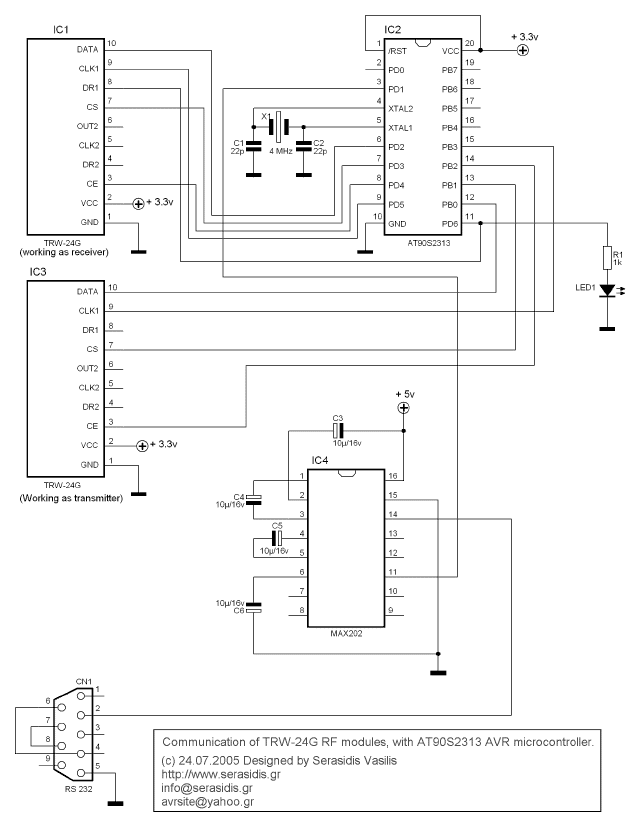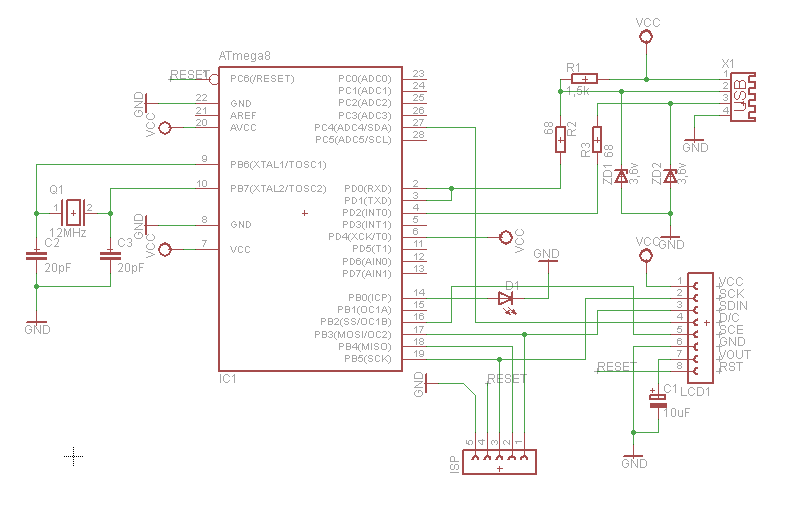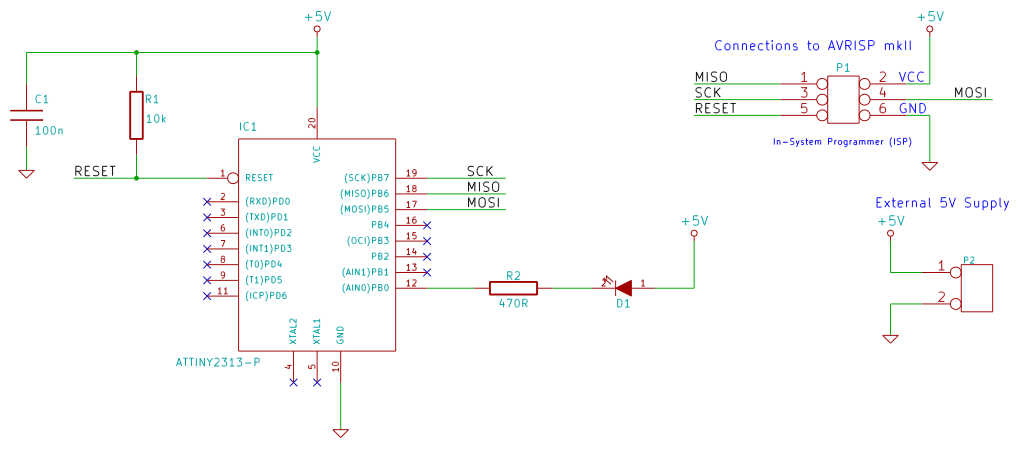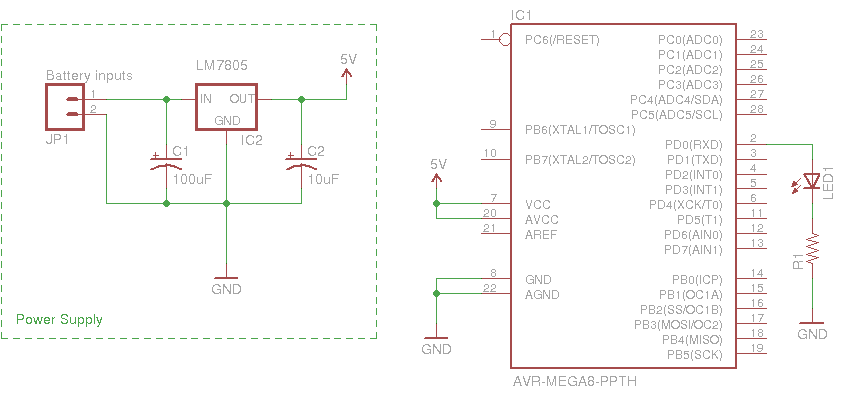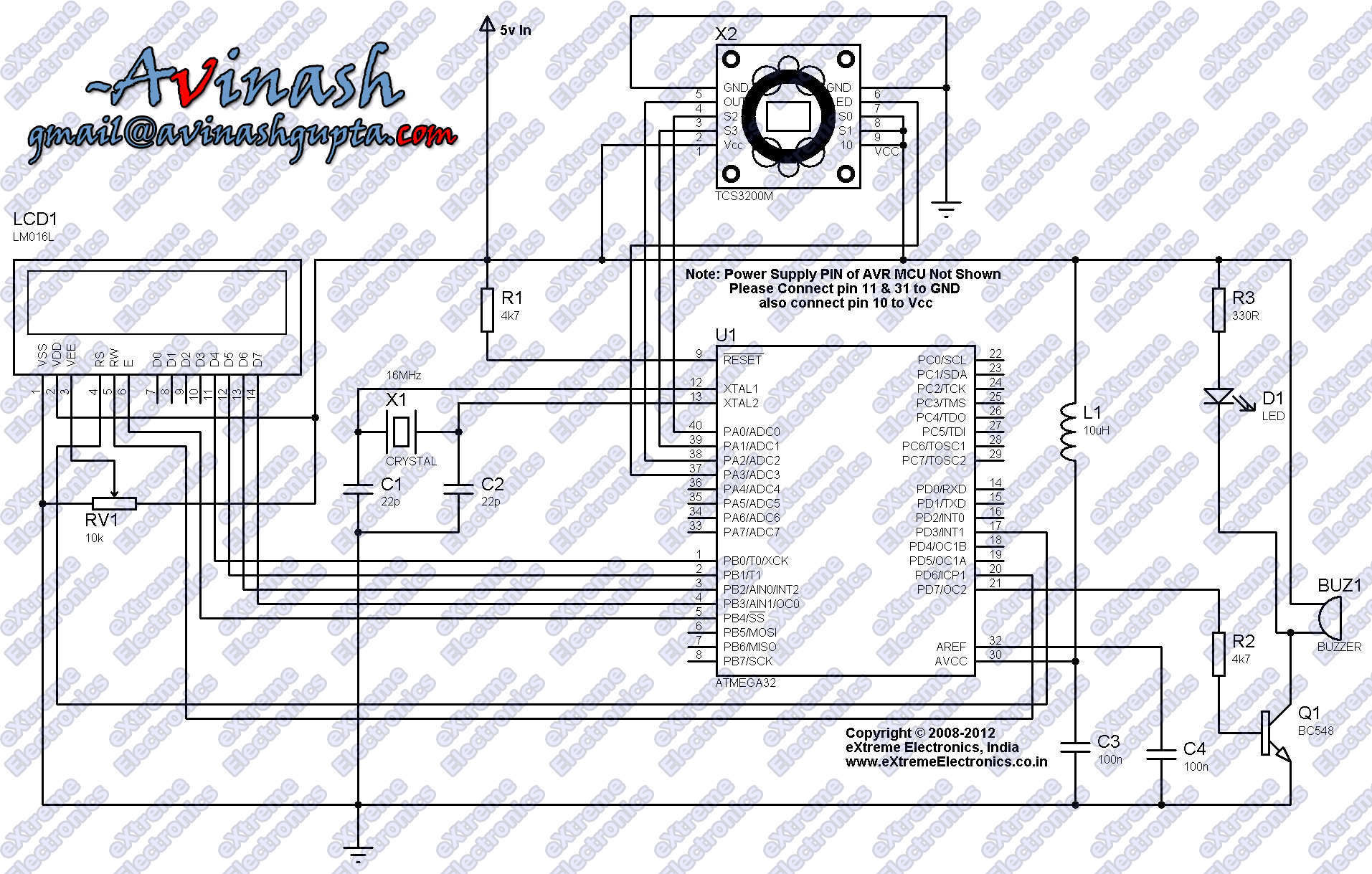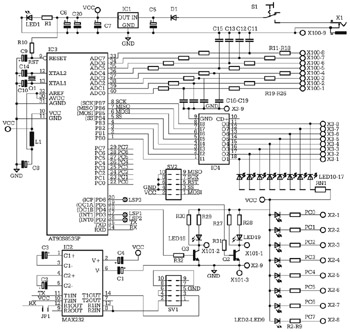
AVR Dongle
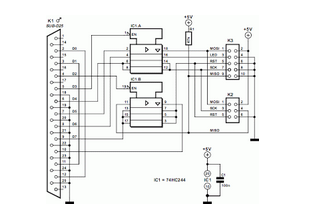
This circuit is designed to program AVR controllers, specifically the AT90S1200, using a parallel port. The circuit is very straightforward. IC1 serves as a buffer.
The circuit operates by interfacing the parallel port of a computer with the AVR microcontroller. The parallel port, often referred to as a printer port, consists of multiple data lines that can be utilized to send programming instructions to the microcontroller. The simplicity of the design allows for easy implementation and troubleshooting.
IC1, which functions as a buffer, is critical in ensuring that the signals from the parallel port are properly conditioned for the microcontroller. This component protects the microcontroller from potential damage due to voltage levels or current that may exceed its input specifications. The buffer also helps to isolate the parallel port from the microcontroller, enhancing the reliability of the programming process.
The circuit typically includes several additional passive components, such as resistors and capacitors, to stabilize the power supply and filter any noise that may affect the programming signals. A power supply circuit may also be included to provide the necessary voltage levels for the AVR microcontroller during programming.
Connections between the parallel port and the microcontroller are made through a series of pins, with specific lines designated for data transmission and control signals. The programming process involves sending a sequence of binary data that corresponds to the firmware being uploaded to the microcontroller's memory.
Overall, this circuit represents a practical solution for programming AVR controllers in a cost-effective manner, utilizing readily available components and straightforward design principles.This circuit is intended to program AVR controllers such as the AT90S1200 via the parallel port. The circuit is extremely simple. IC1 provides buffering f.. 🔗 External reference
The circuit operates by interfacing the parallel port of a computer with the AVR microcontroller. The parallel port, often referred to as a printer port, consists of multiple data lines that can be utilized to send programming instructions to the microcontroller. The simplicity of the design allows for easy implementation and troubleshooting.
IC1, which functions as a buffer, is critical in ensuring that the signals from the parallel port are properly conditioned for the microcontroller. This component protects the microcontroller from potential damage due to voltage levels or current that may exceed its input specifications. The buffer also helps to isolate the parallel port from the microcontroller, enhancing the reliability of the programming process.
The circuit typically includes several additional passive components, such as resistors and capacitors, to stabilize the power supply and filter any noise that may affect the programming signals. A power supply circuit may also be included to provide the necessary voltage levels for the AVR microcontroller during programming.
Connections between the parallel port and the microcontroller are made through a series of pins, with specific lines designated for data transmission and control signals. The programming process involves sending a sequence of binary data that corresponds to the firmware being uploaded to the microcontroller's memory.
Overall, this circuit represents a practical solution for programming AVR controllers in a cost-effective manner, utilizing readily available components and straightforward design principles.This circuit is intended to program AVR controllers such as the AT90S1200 via the parallel port. The circuit is extremely simple. IC1 provides buffering f.. 🔗 External reference
